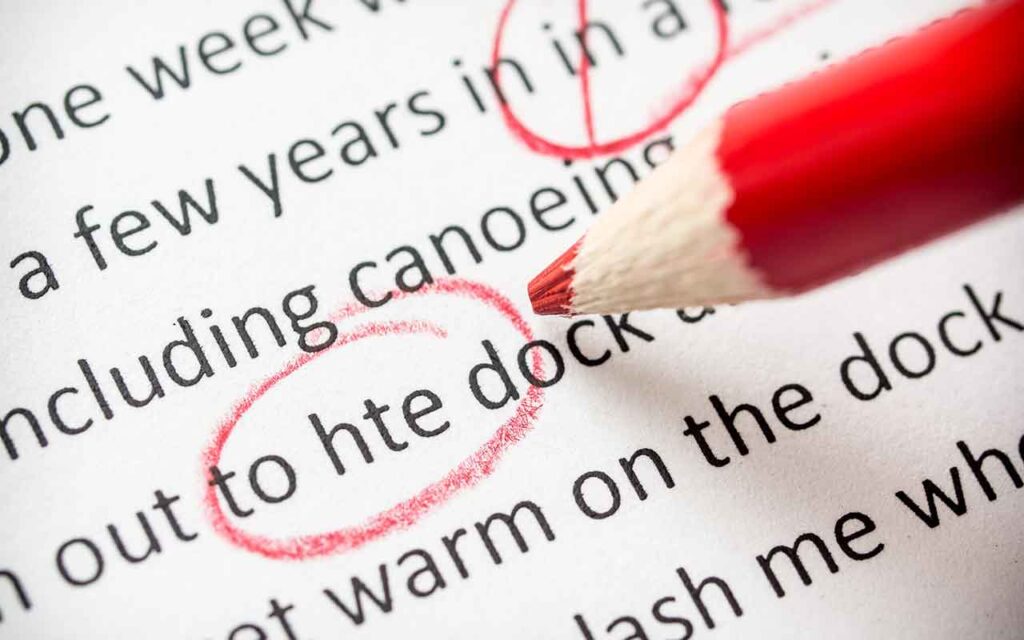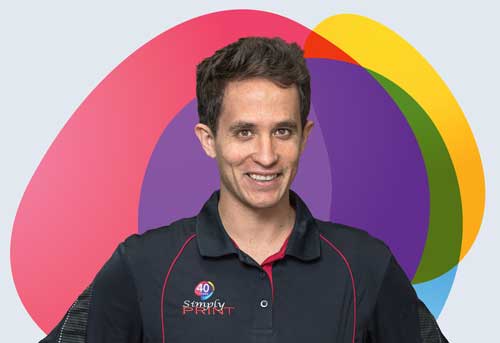Ask any printer about the biggest problem in the industry today and I bet most of them would say proofing.
This is because mistakes are missed constantly by clients. Most times this isn’t an issue. After all, 250 business cards with the wrong phone number isn’t an expensive problem to fix. But what if it’s 100,000 colour brochures with the wrong phone number? What if it’s an embarrassing typing error in a glossy magazine? Proofing is an essential aspect of the printing industry, as mistakes can be costly and embarrassing for clients. However, even with the best intentions, errors can slip through the cracks, often due to clients overlooking them during the review process. This can be a result of many factors, such as rushing through the review or not having an eye for detail.
Missing obvious typos!
Proofing is an essential aspect of the printing industry, as mistakes can be costly and embarrassing for clients. However, even with the best intentions, errors can slip through the cracks, often due to clients overlooking them during the review process. This can be a result of many factors, such as rushing through the review or not having an eye for detail. So why does this happen? Why is a mistake that is so obvious, also so easy to miss? I’ve done some research on this subject, and the answer is surprising. I once saw an ad in the yellow pages for a mobile mechanic. Instead of “YOUR PLACE OR OURS” it said “YOUR PLACE OUR OURS”. This was a full page ad in colour with the mistake printed in 100 point bold type in red. So who’s fault is it? Although the designer at Sensis made the typo, the client received a proof and approved it. The printing industry is one that relies heavily on accuracy and precision. As such, proofing is a critical step in the process of creating printed materials. Proofing involves reviewing a document or design before it goes to print to ensure that there are no errors or mistakes. Despite the importance of proofing, mistakes are still commonly missed by clients. This can be due to a variety of reasons, such as rushing through the review process or not having a keen eye for detail. However, as the post explains, one surprising reason why mistakes are missed is due to “word shape” recognition.
The problem is in the word itself.
One surprising reason for missed errors is our brains’ reliance on word shape recognition. Research from Cambridge University has shown that the human mind focuses on the overall pattern of a word more than its individual letters. This means that even if a word has a typo or its letters are jumbled, our brains can still read it as long as the first and last letters are in the correct place. This phenomenon can make it easy for mistakes to be overlooked, especially if they are part of a larger block of text. Therefore, it’s essential to have a keen eye for detail when proofing printed materials. It’s also crucial to take the time to review the proof carefully and ensure that all information is correct. Clients should be encouraged to review the proof thoroughly and consider having another person review it as well to catch any mistakes that may have been missed.
As an example, consider the report shown below. Despite the jumbled letters and typos, most readers can still read it without difficulty. When we read a sentence, our brain doesn’t process every letter individually but rather reads the words in the context of the sentence.
Arocdnicg to rsceearch at Cmabrigde Uinervtisy, it deosnít mttaer in waht oredr the ltteers in a wrod are, the olny iprmoatnt tihng is taht the frist and lsat ltteer are in the rghit pcale. The rset can be a toatl mses and you can sitll raed it wouthit a pobelrm. Tihs is buseace the huamn mnid deos not raed ervey lteter by istlef, but the wrod as a wlohe.
Birthday blunder!
We once printed 40th birthday invitations for a client and the birthday boy came storming back about a week after the party demanding a refund because his name was wrong. Not his phone number, or his address, or even his surname, but HIS CHRISTIAN NAME! He not only signed a proof, but he also sat beside me as I typed it on the computer. Of the 120 people at the party, the only person who picked up the error was his mother, and she named him, so that’s not really surprising. He exploded when I refused to refund his money. “This is your fault. Can’t you spell? I learned to spell my name when I was five.” I then replied, “Yes, I could spell when I was five, but my name is Brett. And if you can spell your name, why didn’t you see it typed incorrectly on the proof that you signed?”. This was another example of “skimming over” the word, but not reading it.
Missing letters
Read the following sentence and count the number of F’s as you go. Do it fast, and only count once.
FINISHED FILES ARE THE RESULT OF YEARS OF SCIENTIFIC STUDY COMBINED WITH THE EXPERIENCE OF YEARS.
Be honest. How many did you count? If you got more than three, you did well, but there are in fact six. So why do we fail at such a simple task? It’s not like the letters are hidden. The answer is simple. While reading the sentence, our brain doesn’t identify the “V” sounding “F’s”, as in the word “OF”.
Read out loud what you see in the triangle below

Did you say “I Love Paris In The Springtime”? Have another look and read every word. This exercise highlights how easy it is to miss two identical words when they’re on separate lines.
So how can you minimise proofing errors?
To avoid costly mistakes in printed materials, it’s essential to take extra care in the proofreading process. This can involve having multiple people review the text, using tools such as spell check, and taking the time to carefully read through the material. Additionally, it’s important to ensure that the text is presented in a way that makes it easy to read, such as using a clear font, appropriate spacing, and contrasting colors.
By taking these steps, printers can help ensure that mistakes are caught before the material goes to print. This can not only save time and money but can also help maintain a reputation for quality and accuracy in the industry.
You’re much more likely to pick up spelling msitakes… I mean mistakes, if you don’t read the word in the context of the sentence. Be careful that your eyes don’t skim past any words. Copy and paste the text into a program like Word with spell check. Most high-end graphic arts programs don’t have spell check, so don’t assume the printer or graphic artist has used spell check. Finally, check that phone numbers and email addresses are correct. The number of people missing these errors will amaze you. See our FAQ article on the importance of proofing.
Proofing is a critical step in the printing process, and mistakes can be costly and embarrassing for clients. While missed errors can occur for various reasons, understanding the phenomenon of word shape recognition can help clients be more mindful when reviewing proofs. By taking the time to review the proof carefully and having a keen eye for detail, clients can ensure that their printed materials are accurate and error-free.
PS. I really hope there are no typing errors in this blog post. We proofread it about 16 times, so it would be very surprising if there were any. No offence will be taken if you find some.


